-
 Bitcoin
Bitcoin $84,378.2785
-0.55% -
 Ethereum
Ethereum $1,613.3823
-1.71% -
 Tether USDt
Tether USDt $0.9998
-0.01% -
 XRP
XRP $2.1166
-1.51% -
 BNB
BNB $583.4961
-0.48% -
 Solana
Solana $127.9748
-1.40% -
 USDC
USDC $0.9999
-0.01% -
 TRON
TRON $0.2501
-0.90% -
 Dogecoin
Dogecoin $0.1555
-3.12% -
 Cardano
Cardano $0.6204
-2.86% -
 UNUS SED LEO
UNUS SED LEO $9.3626
-0.31% -
 Chainlink
Chainlink $12.3627
-4.61% -
 Avalanche
Avalanche $19.5202
-4.52% -
 Stellar
Stellar $0.2383
-0.79% -
 Toncoin
Toncoin $2.9439
3.78% -
 Shiba Inu
Shiba Inu $0.0...01182
-2.54% -
 Sui
Sui $2.1212
-4.30% -
 Hedera
Hedera $0.1596
-4.40% -
 Bitcoin Cash
Bitcoin Cash $324.2513
-0.94% -
 Litecoin
Litecoin $75.2489
-2.53% -
 Polkadot
Polkadot $3.5883
-3.88% -
 Dai
Dai $1.0000
0.00% -
 Bitget Token
Bitget Token $4.3000
0.25% -
 Hyperliquid
Hyperliquid $15.3653
-2.98% -
 Ethena USDe
Ethena USDe $0.9991
0.00% -
 Pi
Pi $0.6676
-10.59% -
 Monero
Monero $215.7853
0.68% -
 Uniswap
Uniswap $5.2497
-3.13% -
 OKB
OKB $51.1095
-3.64% -
 Pepe
Pepe $0.0...07040
-4.85%
From Purchase to Assembly: A Guide to GPU Mining Equipment
Building a GPU mining rig involves selecting components like GPUs and PSUs, assembling them carefully, and optimizing with software for efficient cryptocurrency mining.
Apr 11, 2025 at 11:49 am
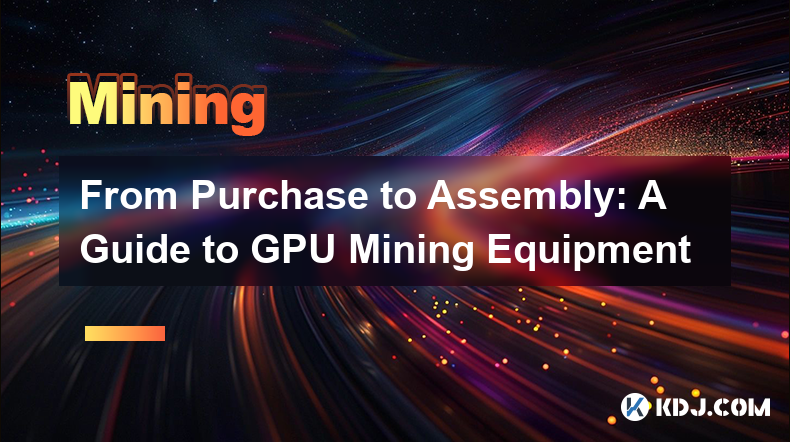
Selecting Your GPU Mining Rig Components
Choosing the right components is crucial for a successful GPU mining operation. This involves careful consideration of several factors, including your budget, the cryptocurrency you intend to mine, and the expected profitability. The core components include Graphics Processing Units (GPUs), a motherboard, a power supply unit (PSU), RAM, and a chassis (case). Don't forget essential peripherals like risers and cables. Researching different GPU models and their hashrates for your chosen coin is paramount. Remember, higher hashrates generally translate to more coins mined, but also come with a higher price tag. Prioritize reputable brands for all components to minimize the risk of malfunctions.
Sourcing Your GPU Mining Equipment
Once you've decided on the specific components, it's time to source them. You have several options: purchasing new components from retailers, buying used equipment from online marketplaces or individuals, or even considering a pre-built mining rig. New components offer warranty protection and assurance of performance, but come at a higher cost. Used equipment can be significantly cheaper but carries the risk of pre-existing damage or reduced lifespan. Pre-built rigs offer convenience but may lack the customization options of building your own. Thoroughly research each vendor before making a purchase to avoid scams or unreliable products. Always verify the seller's reputation and check reviews.
Assembling Your GPU Mining Rig: A Step-by-Step Guide
Building your GPU mining rig is a hands-on process. While challenging for beginners, it’s achievable with careful planning and attention to detail. Here’s a breakdown of the steps involved:
- Prepare your workspace: Ensure a clean, well-lit, and static-free environment. Anti-static wrist straps are highly recommended.
- Install the CPU (if applicable): Some mining rigs use CPUs, while others are GPU-only. Follow the motherboard manual for CPU installation.
- Mount the motherboard in the chassis: Secure the motherboard using standoffs to prevent short circuits.
- Install the RAM: Insert the RAM modules into the appropriate slots on the motherboard. Consult your motherboard manual for the correct slots.
- Install the GPUs: Carefully slot each GPU into the PCI-e slots, ensuring secure connection. Use risers for additional GPUs, if needed.
- Connect the power supply: Ensure the PSU is adequately sized for your components. Connect the appropriate power cables to the motherboard and GPUs.
- Connect the risers: Connect the risers to the GPUs and the motherboard's PCI-e slots. Use appropriate cables and secure connections.
- Install the storage (optional): If needed, install an SSD or HDD for operating system and software.
- Connect peripherals: Connect any necessary peripherals, such as keyboard and mouse (for initial setup).
- Install the operating system: Install a suitable operating system, such as Windows or Linux, optimized for mining.
- Install mining software: Install and configure the mining software for your chosen cryptocurrency.
Choosing the Right Power Supply Unit (PSU)
The power supply unit is crucial; it must provide enough power for all components. Underpowering your rig can lead to instability and potentially damage components. Always choose a PSU with sufficient wattage to handle the peak power draw of your GPUs and other components. Overpowering is generally acceptable, providing a safety margin, but avoid excessive overkill to maintain cost-effectiveness. Look for PSUs with high efficiency ratings (80+ Bronze, Silver, Gold, or Platinum) to minimize energy waste and heat generation. Consider modular PSUs for easier cable management.
Understanding GPU Hashrates and Mining Profitability
Different GPUs offer varying hashrates, which directly impact mining profitability. The hashrate represents the computational power of the GPU, measured in hashes per second (H/s), megahashes per second (MH/s), or gigahashes per second (GH/s). Higher hashrates generally translate to more mined cryptocurrency, but this also depends on the network difficulty and cryptocurrency price. Use online mining profitability calculators to estimate potential earnings based on your chosen GPU, cryptocurrency, and electricity costs. These calculators often factor in network difficulty and current cryptocurrency prices.
Cooling Your GPU Mining Rig
Effective cooling is critical for maintaining the performance and longevity of your GPU mining rig. Excessive heat can lead to decreased hashrates, instability, and even hardware failure. Consider using a combination of case fans, GPU fans, and potentially a liquid cooling system for high-end setups. Ensure proper airflow within the chassis, and monitor GPU temperatures using monitoring software. Regularly clean dust from the components to optimize cooling efficiency. Adequate ventilation in the room where the rig is located is also essential.
Software and Operating Systems for GPU Mining
Choosing the right software and operating system is crucial for efficient mining. Popular operating systems include Windows and various Linux distributions. Linux is often preferred for its stability and resource efficiency. Mining software varies depending on the chosen cryptocurrency. Research the most efficient and reliable mining software for your selected cryptocurrency. Many software options offer features such as automatic overclocking, monitoring, and remote management. Proper software configuration is essential for optimizing mining performance.
Overclocking Your GPUs for Increased Hashrates
Overclocking involves increasing the clock speed of your GPUs to boost their hashrates. This can lead to significant increases in mining profitability, but it also carries risks. Overclocking can generate more heat and increase the risk of hardware damage if not done carefully. Start with conservative overclocking settings and gradually increase them while monitoring temperatures and stability. Use monitoring software to track GPU temperatures and adjust settings accordingly. Improper overclocking can lead to instability and system crashes.
Common Questions
Q: What is the best GPU for mining?
A: There is no single "best" GPU. The optimal choice depends on the cryptocurrency being mined, its current difficulty, and your budget. Higher-end cards generally offer better hashrates but come at a higher cost.
Q: How much does it cost to build a GPU mining rig?
A: The cost varies significantly depending on the number of GPUs, their model, and other components. Expect a substantial investment, ranging from several hundred to several thousand dollars.
Q: How much can I earn mining cryptocurrency?
A: Profitability depends on many factors, including the cryptocurrency's price, network difficulty, hashrates of your GPUs, and electricity costs. Use online calculators to estimate potential earnings.
Q: Is GPU mining profitable?
A: Profitability is highly variable and depends on many factors. It's crucial to research thoroughly and factor in all costs before investing. Profitability can change rapidly due to fluctuations in cryptocurrency prices and network difficulty.
Q: What are the risks associated with GPU mining?
A: Risks include hardware failure, fluctuating cryptocurrency prices, increased electricity costs, and the potential for your investment to become unprofitable. Thorough research and careful planning are essential to mitigate these risks.
Disclaimer:info@kdj.com
The information provided is not trading advice. kdj.com does not assume any responsibility for any investments made based on the information provided in this article. Cryptocurrencies are highly volatile and it is highly recommended that you invest with caution after thorough research!
If you believe that the content used on this website infringes your copyright, please contact us immediately (info@kdj.com) and we will delete it promptly.
- As strength returns to the cryptocurrency market, many investors are on the hunt for the best altcoin to buy now.
- 2025-04-16 03:00:18
- ZK Token Plummets 17% After Hacker Steals $5M From Airdrop Contract
- 2025-04-16 03:00:18
- An Attacker Minted 111 Million ZK Tokens Today
- 2025-04-16 03:00:17
- Kyrgyzstan Strengthens Its Position as a Regional Cryptocurrency Hub
- 2025-04-16 03:00:17
- ZKsync Confirms Exploit Targeting Unclaimed Airdrop Tokens Enabled an Unauthorized Actor to Drain Approximately $5 Million
- 2025-04-16 03:00:15
- Web3AI ($WAI) — The AI-Driven Crypto Ecosystem Everyone's Talking About
- 2025-04-16 03:00:15
Related knowledge
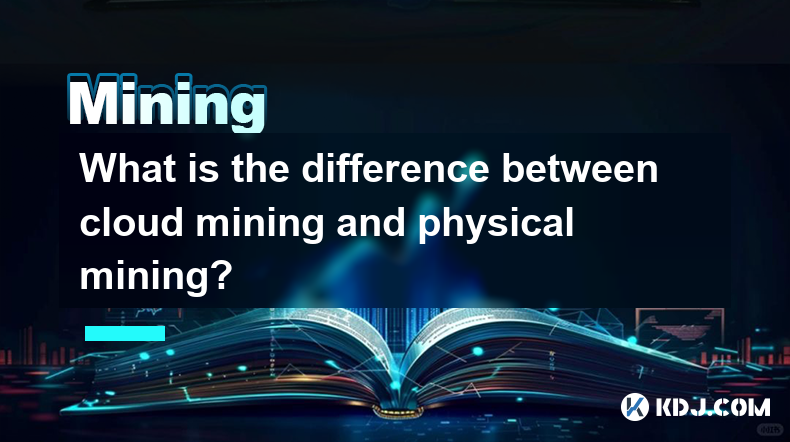
What is the difference between cloud mining and physical mining?
Apr 16,2025 at 01:49am
What is the difference between cloud mining and physical mining? In the world of cryptocurrencies, mining is the process by which new coins are generated and transactions are verified and added to the blockchain. There are two primary methods of mining: cloud mining and physical mining. Understanding the differences between these two approaches can help...
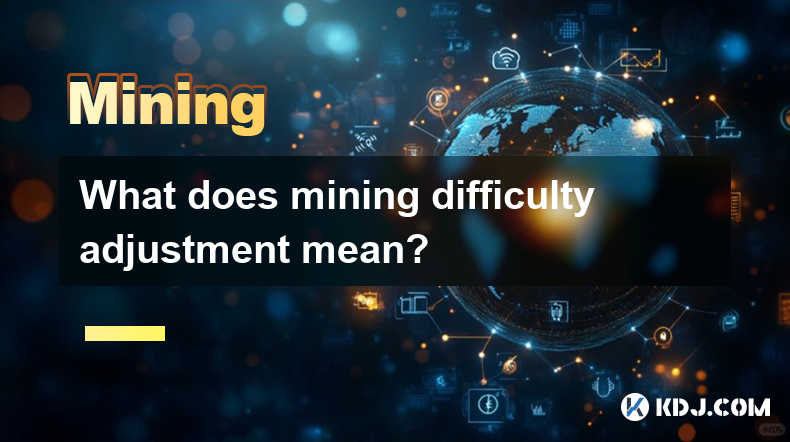
What does mining difficulty adjustment mean?
Apr 16,2025 at 12:42am
What does mining difficulty adjustment mean? Mining difficulty adjustment is a crucial mechanism in blockchain networks, particularly in Proof of Work (PoW) systems like Bitcoin. It ensures that the rate at which new blocks are added to the blockchain remains consistent, despite fluctuations in the total computational power (hash rate) of the network. T...
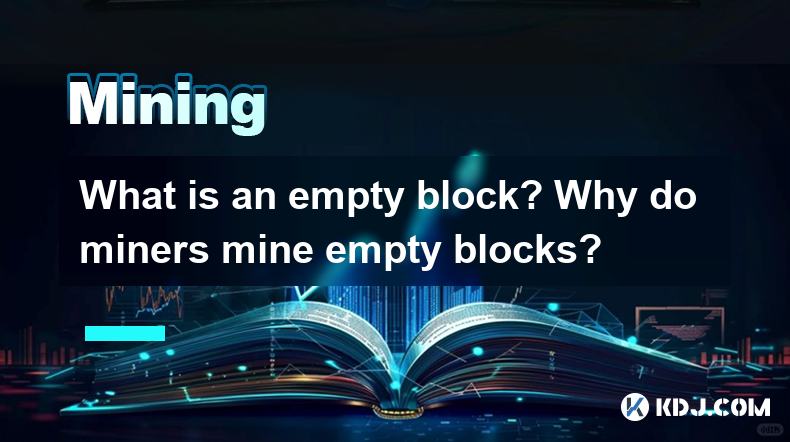
What is an empty block? Why do miners mine empty blocks?
Apr 16,2025 at 01:28am
What is an Empty Block?An empty block in the context of blockchain technology, particularly in cryptocurrencies like Bitcoin, refers to a block that contains no transactions other than the coinbase transaction. The coinbase transaction is a special transaction in which new bitcoins are generated and awarded to the miner who successfully mines the block....
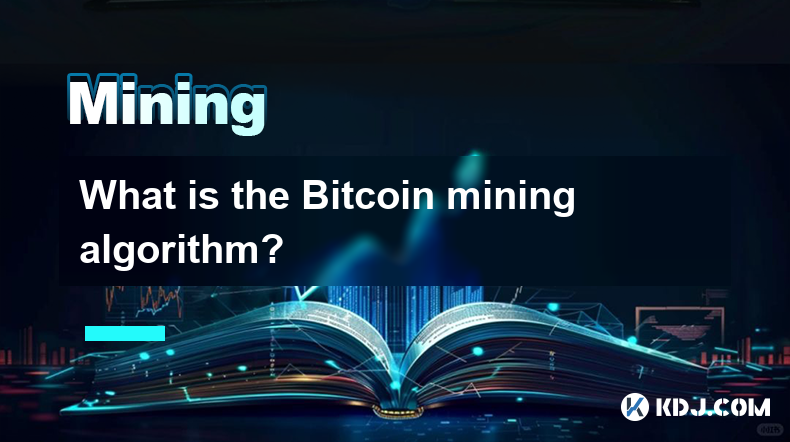
What is the Bitcoin mining algorithm?
Apr 15,2025 at 08:00pm
What is the Bitcoin Mining Algorithm? Bitcoin mining is a crucial process that maintains the integrity and security of the Bitcoin network. At the heart of this process lies the Bitcoin mining algorithm, which is responsible for verifying transactions and adding them to the blockchain. Understanding this algorithm is essential for anyone interested in t...

How to optimize the parameters of the mining software?
Apr 15,2025 at 10:43pm
Optimizing the parameters of mining software is crucial for maximizing efficiency and profitability in cryptocurrency mining. The process involves fine-tuning various settings to ensure that your mining operations run smoothly and effectively. In this article, we will explore the steps and considerations involved in optimizing the parameters of your min...
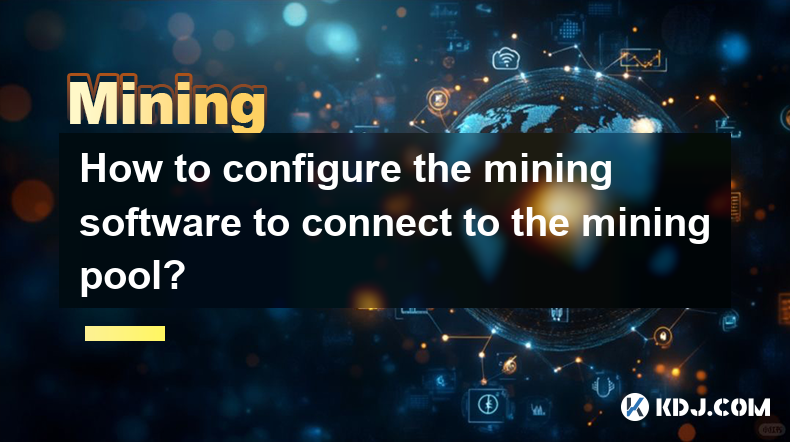
How to configure the mining software to connect to the mining pool?
Apr 16,2025 at 12:07am
Configuring mining software to connect to a mining pool is a crucial step for anyone looking to participate in cryptocurrency mining. This process involves setting up your mining software to communicate with a mining pool server, which then coordinates the mining efforts of multiple miners to increase the chances of solving cryptographic puzzles and ear...

What is the difference between cloud mining and physical mining?
Apr 16,2025 at 01:49am
What is the difference between cloud mining and physical mining? In the world of cryptocurrencies, mining is the process by which new coins are generated and transactions are verified and added to the blockchain. There are two primary methods of mining: cloud mining and physical mining. Understanding the differences between these two approaches can help...

What does mining difficulty adjustment mean?
Apr 16,2025 at 12:42am
What does mining difficulty adjustment mean? Mining difficulty adjustment is a crucial mechanism in blockchain networks, particularly in Proof of Work (PoW) systems like Bitcoin. It ensures that the rate at which new blocks are added to the blockchain remains consistent, despite fluctuations in the total computational power (hash rate) of the network. T...

What is an empty block? Why do miners mine empty blocks?
Apr 16,2025 at 01:28am
What is an Empty Block?An empty block in the context of blockchain technology, particularly in cryptocurrencies like Bitcoin, refers to a block that contains no transactions other than the coinbase transaction. The coinbase transaction is a special transaction in which new bitcoins are generated and awarded to the miner who successfully mines the block....

What is the Bitcoin mining algorithm?
Apr 15,2025 at 08:00pm
What is the Bitcoin Mining Algorithm? Bitcoin mining is a crucial process that maintains the integrity and security of the Bitcoin network. At the heart of this process lies the Bitcoin mining algorithm, which is responsible for verifying transactions and adding them to the blockchain. Understanding this algorithm is essential for anyone interested in t...

How to optimize the parameters of the mining software?
Apr 15,2025 at 10:43pm
Optimizing the parameters of mining software is crucial for maximizing efficiency and profitability in cryptocurrency mining. The process involves fine-tuning various settings to ensure that your mining operations run smoothly and effectively. In this article, we will explore the steps and considerations involved in optimizing the parameters of your min...

How to configure the mining software to connect to the mining pool?
Apr 16,2025 at 12:07am
Configuring mining software to connect to a mining pool is a crucial step for anyone looking to participate in cryptocurrency mining. This process involves setting up your mining software to communicate with a mining pool server, which then coordinates the mining efforts of multiple miners to increase the chances of solving cryptographic puzzles and ear...
See all articles























































































